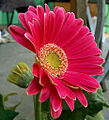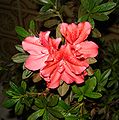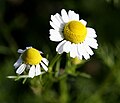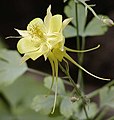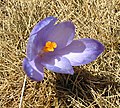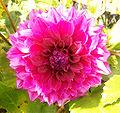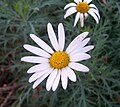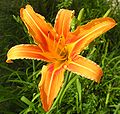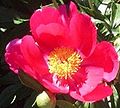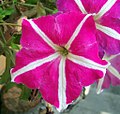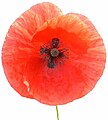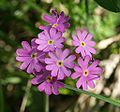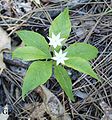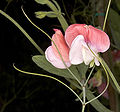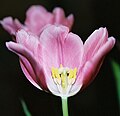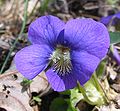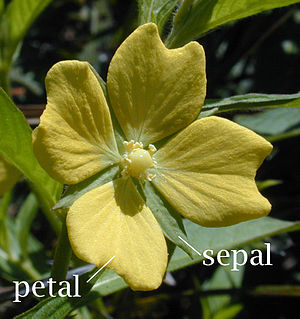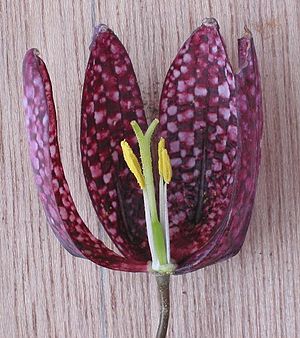Difference between revisions of "AY Honors/Flowers/Answer Key"
| Line 165: | Line 165: | ||
===c. Distinguish and name two out of five wild or cultivated flowers by their odor, while blindfolded.=== | ===c. Distinguish and name two out of five wild or cultivated flowers by their odor, while blindfolded.=== | ||
| − | This requirement is a fun activity that your Pathfinders are sure to enjoy. Select the flowers carefully, either from your garden (or one you have permission to "raid"), or from a store that sells flowers (a florist or a grocery store). Smell them to be sure they each have a discernible odor, and then determine their identities (you can use a key to do this). Allow each Pathfinder to sniff all the flowers without blindfolds so they can learn the smells. When a Pathfinder is ready, apply the blindfold, and hold the flower near the nose. Allow each flower to be sniffed and have the Pathfinder announce its supposed identity. If the Pathfinder cannot get two out of five in the first, try, allow him (or her) to smell them again without the blindfold and be sure the flower can be identified ''without'' the blindfold. Then try again. | + | This requirement is a fun activity that your Pathfinders are sure to enjoy. Select the flowers carefully, either from your garden (or one you have permission to "raid"), or from a store that sells flowers (a florist or a grocery store). Smell them to be sure they each have a discernible odor, and then determine their identities (you can use a key to do this). Cultivated flowers will generally have a stronger aroma than wild flowers. Allow each Pathfinder to sniff all the flowers without blindfolds so they can learn the smells. When a Pathfinder is ready, apply the blindfold, and hold the flower near the nose. Allow each flower to be sniffed and have the Pathfinder announce its supposed identity. If the Pathfinder cannot get two out of five in the first, try, allow him (or her) to smell them again without the blindfold and be sure the flower can be identified ''without'' the blindfold. Then try again. |
===d. List flowers that you have observed being visited for food by the following:=== | ===d. List flowers that you have observed being visited for food by the following:=== | ||
Revision as of 01:58, 2 August 2007
Template:Honor header Flowers present an exciting field of study to people of all ages. Though young boys may dismiss the study of flowers as something too "girly," they will soon discover that flowering plants are a truly fascinating subject. There are thousands of species of flowering plants all around us. Most have flowers for only a short time, and most are inconspicuous - not what most people would even call a flower, but would be quick to call a weed. If the student of nature is willing to expand the definition of "flower" to include any plant that produces flowers, a whole new world of flowers will be opened.
An example would be a plant known as loosestrife. Loosestrife is not a plant that most gardeners would consider cultivating - it looks very much like a weed. But upon close examination, the careful observer will find much about the plant to take delight in. Some species of loosestrife have yellow flowers, others have purple ones. The flowers themselves are on the smallish side, but they are quite beautiful. They attract bees, ants, and other insects. Being able to identify a "weed" can be very satisfying and requires careful attention to detail. I personally hunt out weeds whenever I am out for a walk - indeed, sometimes finding a new "weed" is the whole point of the walk. When I see one I do not know, I take a careful look. What color is the flower? How many petals does it have? Do the leaves grow from the stem in pairs, opposite one another, or do they take turns, growing alternately? Are the veins in the leaves branched or parallel? Does the leaf grow directly from the stem, or is it attached by a small stem of its own? Is the stem hairy? square? All of these questions are important clues to a plant's identity. When my walk is over, I turn to a field guide or to one of many sites on the Internet and try to discover what plant I have discovered. It is a thrill to me when I finally figure out what it is, and then I read everything I can about this new species in my arsenal. Is it a native plant, or was it introduced? Does it have edible parts? Does it have a medicinal use? What is peculiar about it? Why does it have the name it has? The answers to these questions are almost invariably fascinating! I invite you to study God's world through the flowers He created!
1. Draw or photograph 35 kinds of flowers and identify them correctly.
This website http://www.realtimerendering.com/flowers/flowers.html can help you identify flowers by entering in the answers to several questions. It would be a good idea to print out the form and take copies with you into the field. Some of the questions are difficult to answer unless you have the plant right in front of you.
- Clematis jackmanii 2.jpg
Clematis
- 488px-Cow vetch2.jpg
Tufted Vetch
2. Draw and properly label, or point out the actual parts of a flower: pistil, stamen, petal, sepal.
.
3. Name six flower families and their distinguishing characteristics. Name at least two flowers in each family.
Adventist Youth Honors Answer Book/Flower families
4. Describe the life history of a particular flower, including the part played by insects or wind in pollination.
- A seed needs warmth and water to grow roots.
- The flower sprouts up and down at the same time.
- The flowers grow more leaves.
- Bees and other insects pollinate the flowers.
- The flowers form seeds.
- The seeds are dispersed and take root.
- The cycle repeats.
5. Name at least two plants that are poisonous to touch, and state which, if any, are found in your locality.
Poison Ivy, Poison Oak, and Poison Sumac all fall into this category. Poison ivy grows all over North America, and is most fond of disturbed areas such as stream banks and roadsides. Poisin oak grows primarily in Texas, Oklahoma, and the Southeastern and Western United States. Poison Sumac is found in subtropical and warm temperate regions throughout the world, with the highest diversity in southern Africa.
6. Do three of the following:
a. Arrange, draw or photograph a series of at least six flowers showing in order the colors of the rainbow: red, orange, yellow, green, blue, violet.
It is sometimes difficult to assign a color to a flower. Some varieties of a flower in a given species will have blossoms in one color, while another variety will have them in another. Some flowers are difficult to call blue or violet, as the color lies somewhere in between. Red and violet flowers can also be in between. Use your best judgment to meet this requirement. We present a few possibilities here, so do not feel constrained by this list.
| Red | Orange | Yellow | Green | Blue | Violet |
|---|---|---|---|---|---|
|
|
|
|
|
|
b. Submit fresh, pressed or dried flowers which have: five petals, four petals, three petals, no petals.
The following are some possible flowers for your collection.
| Five petals | Four petals | Three petals | Apetalous |
|---|---|---|---|
|
|
|
|
c. Distinguish and name two out of five wild or cultivated flowers by their odor, while blindfolded.
This requirement is a fun activity that your Pathfinders are sure to enjoy. Select the flowers carefully, either from your garden (or one you have permission to "raid"), or from a store that sells flowers (a florist or a grocery store). Smell them to be sure they each have a discernible odor, and then determine their identities (you can use a key to do this). Cultivated flowers will generally have a stronger aroma than wild flowers. Allow each Pathfinder to sniff all the flowers without blindfolds so they can learn the smells. When a Pathfinder is ready, apply the blindfold, and hold the flower near the nose. Allow each flower to be sniffed and have the Pathfinder announce its supposed identity. If the Pathfinder cannot get two out of five in the first, try, allow him (or her) to smell them again without the blindfold and be sure the flower can be identified without the blindfold. Then try again.
d. List flowers that you have observed being visited for food by the following:
- 1. Birds:
- 2. Honeybees:
- 3. Bumblebees:
- 4. Butterflies:
- 5. Moths:
